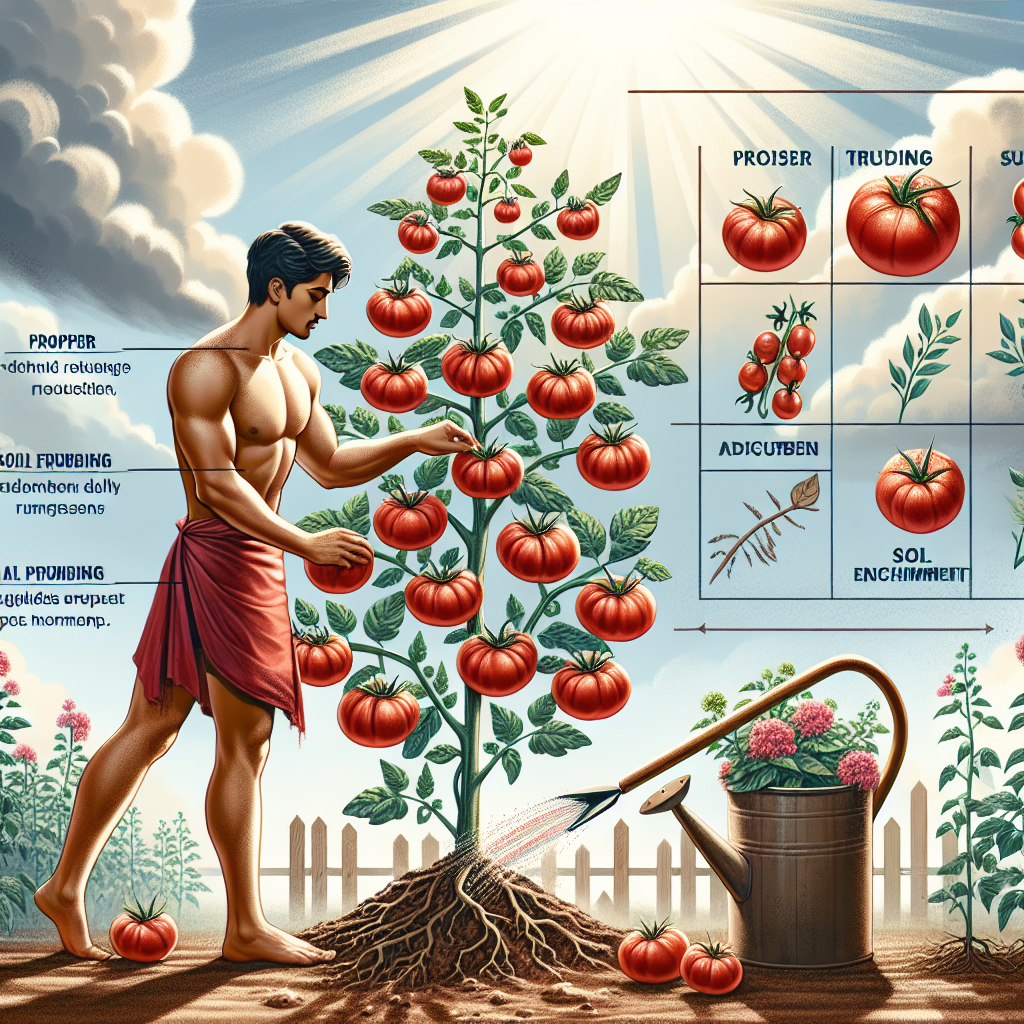
How to get tomato plant to produce more fruit
Introduction to Growing Tomato Plants
Tomatoes are one of the most beloved garden fruits, known for their vibrant colors and incredible taste. However, many gardeners often face the challenge of their tomato plants not producing as much fruit as they would like. The right techniques can make a significant difference in your yields. In this article, we’ll explore various strategies on how to get tomato plant to produce more fruit.
Understanding Tomato Plant Needs
To ensure tomato plants thrive and yield a bountiful harvest, it’s essential to understand their basic needs:
- Sunlight: Tomato plants require full sun for at least 6 to 8 hours a day.
- Soil Quality: Well-draining, nutrient-rich soil is crucial for strong root development.
- Watering: Consistent watering is key, but avoid waterlogging, which can cause root rot.
- Temperature: Tomatoes thrive in warm temperatures between 70°F and 85°F.
Optimal Planting Techniques
Selecting the Right Variety
Choosing the right tomato variety can influence both the taste and productivity. Some popular fruit-bearing varieties include:
- Cherry Tomatoes: These small, sweet varieties are prolific producers.
- Roma Tomatoes: Ideal for sauces, they yield heavily on sturdy plants.
- Beefsteak Tomatoes: Large fruits that can also produce well under the right conditions.
Proper Planting Methods
When planting seeds or seedlings, consider the following tips:
- Plant tomatoes deep in the soil; this encourages more root growth.
- Space plants adequately to ensure air circulation and prevent disease.
- Use stakes or cages to support plants as they grow, which also aids in sun exposure.
Soil Preparation for Maximum Yield
| Nutrient | Importance | Sources |
|---|---|---|
| Nitrogen | Promotes leafy growth | Compost, blood meal |
| Phosphorus | Supports root development and flowering | Bone meal, rock phosphate |
| Potassium | Enhances fruit development | Kelp meal, greensand |
Before planting, test your soil pH; tomatoes prefer a slightly acidic to neutral pH range of 6.0 to 7.0. Amend your soil with organic matter and the right nutrients depending on the results of your soil test.
Watering Practices to Boost Production
Tomatoes need a consistent watering schedule to produce fruit optimally. Here are some tips for effective watering:
- Frequency: Water deeply once or twice a week, depending on rainfall.
- Method: Use drip irrigation or a soaker hose to minimize moisture on leaves.
- Signs of Stress: Look for wilting or yellowing leaves as indicators of under or over-watering.
Fertilization Tips for Healthy Growth
Fertilizing your tomato plants correctly can significantly influence their ability to produce fruit. Here are guidelines to follow:
- Apply a balanced fertilizer at planting time to establish strong growth.
- During the flowering stage, switch to a fertilizer higher in phosphorus and potassium to encourage fruit set.
- Mulch around your plants to retain moisture and keep the soil temperature consistent, further reducing the need for frequent fertilization.
Pruning Techniques for More Fruit
Pruning helps to direct the plant’s energy towards fruit production rather than excessive leaf growth. Here’s how to prune your plants effectively:
- Remove Suckers: These are the small shoots that grow between the main stem and branches; they can be pinched off to improve airflow and sunlight exposure.
- Trim Lower Leaves: Cutting off the leaves closest to the ground can help prevent disease and redirect nutrients.
- Ensure Good Airflow: A well-pruned plant can better withstand pests and diseases.
Managing Pest and Disease Control
A healthy plant is more likely to produce abundant fruit. Here are some strategies to keep your plants healthy:
- Monitor Regularly: Inspect your plants frequently for signs of pests like aphids or whiteflies.
- Organic Remedies: Use insecticidal soap or neem oil as natural pest control methods.
- Disease Prevention: Rotate crops each year to minimize soil-borne diseases.
Encouraging Pollination
Tomato plants are self-pollinating, but they still benefit from insect activity. You can encourage pollination by:
- Attracting Pollinators: Planting flowers such as marigolds or sunflowers nearby can attract beneficial insects.
- Shaking Plants: Gently shaking tomato plants when they are in bloom can help to release pollen.
Harvesting for More Production
It's crucial to harvest tomatoes at the right time. Overripe or under ripe fruits can affect the plant's ability to produce more. Here’s how to know when to harvest:
- Color: Look for a uniform color; ripe tomatoes should have deep, rich color depending on the variety.
- Firmness: Tomatoes should yield slightly when pressed, indicating they are ripe.
- Regular Picking: Picking ripe tomatoes encourages the plant to produce more.
Final Thoughts on Boosting Tomato Production
Identifying the factors affecting tomato production and implementing the right practices will dramatically increase your harvest. Remember to monitor, adjust, and be patient; gardening is a learning process. By following these tips on how to get tomato plant to produce more fruit, you can enjoy a bounteous, delicious tomato harvest from your garden.
"The greatness of a garden lies not in the grandness of display but in the fruits and the lessons learned." - Gardening Proverb
FAQs About Tomato Production
- Q: How often should I water my tomato plants?
- A: Usually, once or twice a week depending on the weather conditions is ideal.
- Q: Can I grow tomatoes indoors?
- A: Yes, with adequate lighting and temperature control, indoor tomato gardening is possible.
By planning carefully and tending to your tomato plants, you can reap the rewards of numerous juicy tomatoes all season long.
```By Guest, Published on September 24th, 2024